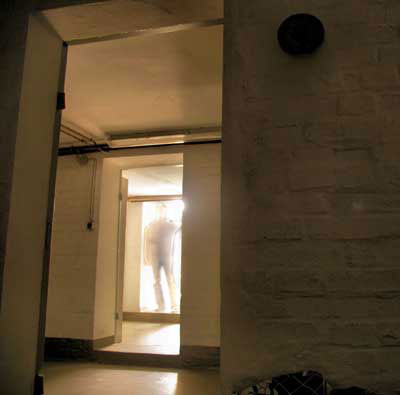
Vaughan Bell from ScientificAmerican has an article about how it’s common for people, under bereavement, to experience a ghostly encounter. Only that these encounters are hallucinations brought on by stressful environments.
I partially agree with the theory. I would be inclined to write off most ghost visitations after a loved one passes as a possible hallucination. Whether it be olfactory, visual or auditory hallucinations.
The problem is that at least in my family, I can count of a half a dozen times where this was not the case.
When my father passed away in 2005, this 3-4 year old kid (not related) described seeing this man standing by the doorway telling him:
“It’s ok, I’m not in pain. I can walk now…”
The kid proceeded to describe my father in detail. The only reason why someone found out what this kid had seen was because they observed him acting strange. While sitting down watching television, this kid kept swatting at his ear. In a annoyed manner. When finally asked what was going on, he said that the man in the door would not be quiet.
Like this story, I’ve heard many other stories from my family about loved ones visiting the living after they’ve passed. A sort of last farewell.
Full source:ScientificAmerican
15 commentsGhost Stories: Visits from the Deceased
After a loved one dies, most people see ghostsBy Vaughan Bell
Carlos Sluzki’s cat died a while ago now, but he still sometimes visits. Now more of a shadow cat, the former pet seems to lurk at the edges of Sluzki’s vision, as a misinterpreted movement amid the everyday chaos of domestic life. All the same, the shadow cat is beginning to slink away and Sluzki notes that as the grief fades his erstwhile friend is “erasing himself from the world of the present and receding into the bittersweet world of the memories of the loved ones.”
The dead stay with us, that much is clear. They remain in our hearts and minds, of course, but for many people they also linger in our senses—as sights, sounds, smells, touches or presences. Grief hallucinations are a normal reaction to bereavement but are rarely discussed, because people fear they might be considered insane or mentally destabilised by their loss. As a society we tend to associate hallucinations with things like drugs and mental illness, but we now know that hallucinations are common in sober healthy people and that they are more likely during times of stress.
A Common Hallucination
Mourning seems to be a time when hallucinations are particularly common, to the point where feeling the presence of the deceased is the norm rather than the exception. One study, by the researcher Agneta Grimby at the University of Goteborg, found that over 80 percent of elderly people experience hallucinations associated with their dead partner one month after bereavement, as if their perception had yet to catch up with the knowledge of their beloved’s passing. As a marker of how vivid such visions can seem, almost a third of the people reported that they spoke in response to their experiences. In other words, these weren’t just peripheral illusions: they could evoke the very essence of the deceased.Occasionally, these hallucinations are heart-rending. A 2002 case report by German researchers described how a middle aged woman, grieving her daughter’s death from a heroin overdose, regularly saw the young girl and sometimes heard her say “Mamma, Mamma!” and “It’s so cold.” Thankfully, these distressing experiences tend to be rare, and most people who experience hallucinations during bereavement find them comforting, as if they were re-connecting with something of the positive from the person’s life. Perhaps this reconnecting is reflected in the fact that the intensity of grief has been found to predict the number of pleasant hallucinations, as has the happiness of the marriage to the person who passed away.
There are hints that the type of grief hallucinations might also differ across cultures. Anthropologists have told us a great deal about how the ceremonies, beliefs and the social rituals of death differ greatly across the world, but we have few clues about how these different approaches affect how people experience the dead after they have gone. Carlos Sluzki, the owner of the shadow cat and a cross-cultural researcher at George Mason University, suggests that in cultures of non-European origin the distinction between “in here” and “out there” experiences is less strictly defined, and so grief hallucinations may not be considered so personally worrying. In a recent article, he discussed the case of an elderly Hispanic lady who was frequently “visited” by two of her children who died in adulthood and were a comforting and valued part of her social network. Other case reports have suggested that such hallucinations may be looked on more favorably among the Hopi Indians, or the Mu Ghayeb people from Oman, but little systematic work has been done.
And there, our knowledge ends. Despite the fact that hallucinations are one of the most common reactions to loss, they have barely been investigated and we know little more about them. Like sorrow itself, we seem a little uncomfortable with it, unwilling to broach the subject and preferring to dwell on the practicalities—the “call me if I can do anything,” the “let’s take your mind off it,” the “are you looking after yourself?”
Only a minority of people reading this article are likely to experience grief without re-experiencing the dead. We often fall back on the cultural catch all of the “ghost” while the reality is, in many ways, more profound. Our perception is so tuned to their presence that when they are not there to fill that gap, we unconsciously try to mold the world into what we have lived with for so long and so badly long for. Even reality is no match for our love.




